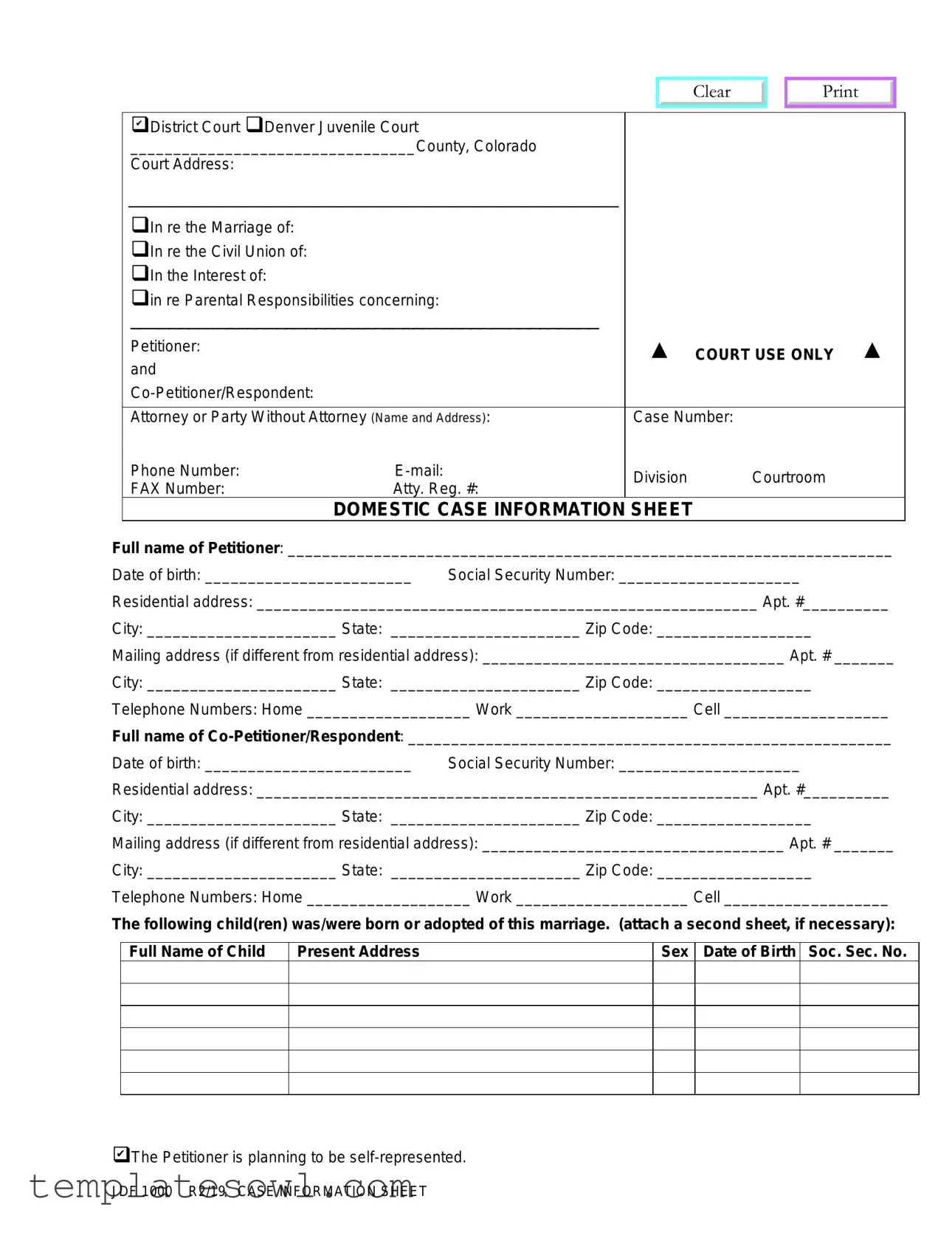What is the purpose of the JDF 1000 form?
The JDF 1000 form, also known as the Domestic Case Information Sheet, serves as an essential document in Colorado family law cases. It collects vital information about the parties involved in legal proceedings concerning marriage, civil unions, or parental responsibilities. By providing details such as names, dates of birth, and residential addresses, this form ensures that the court has accurate and comprehensive information to facilitate the case's management and ruling. It helps streamline the court process and aids in proper case categorization.
Who needs to fill out the JDF 1000 form?
Typically, both the Petitioner and the Co-Petitioner or Respondent are required to fill out the JDF 1000 form when initiating or responding to a domestic case in Colorado. This includes any legal matters regarding marriage dissolution, civil unions, or issues related to child custody and responsibilities. If individuals choose to represent themselves, they must still complete the form accurately. Those with legal representation will have their attorneys assist in filling it out, but the essential information must still be provided by the involved parties.
What information is needed to complete the JDF 1000 form?
To complete the JDF 1000 form, individuals must provide a range of personal information. This includes full names, dates of birth, and Social Security numbers for both the Petitioner and Co-Petitioner/Respondent. Detailed residential and mailing addresses are also required, as well as contact numbers - including home, work, and cell. Additionally, the form necessitates information about any children involved, including their full names, addresses, sexes, dates of birth, and Social Security numbers. This comprehensive data is crucial for the court to understand the dynamics of the case fully.
What happens if there are errors in filling out the JDF 1000 form?
Errors in the JDF 1000 form can lead to complications in the legal process. If inaccuracies are found, it may result in delays or additional court hearings to address the discrepancies. For this reason, it is important for individuals to review their information carefully before submission. The form includes options to acknowledge whether changes have been made to the original content. If an error is discovered after the form has been submitted, parties should promptly notify the court and provide an amendment to rectify the mistake.

